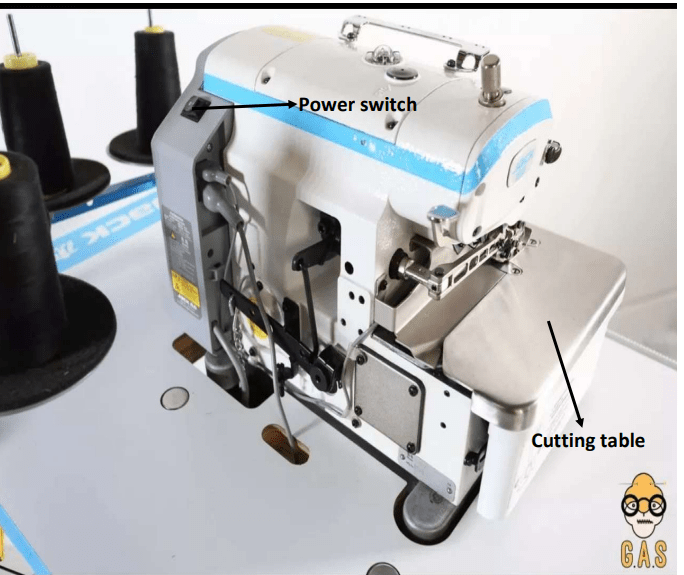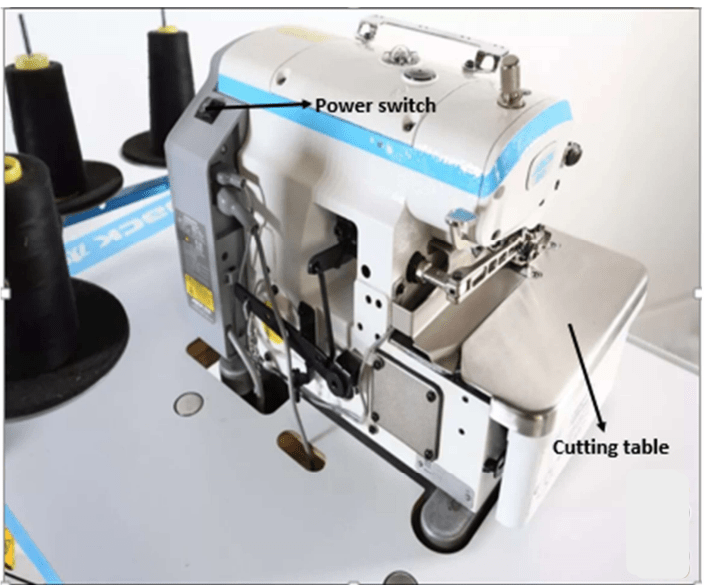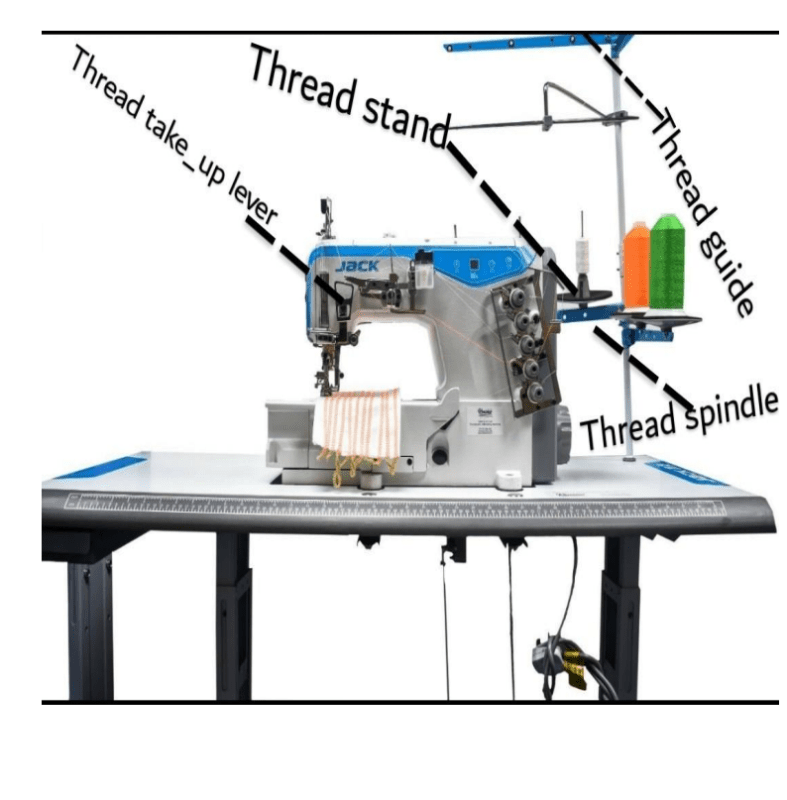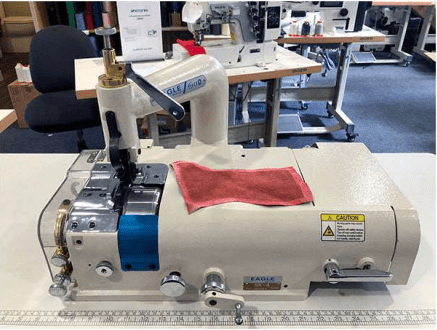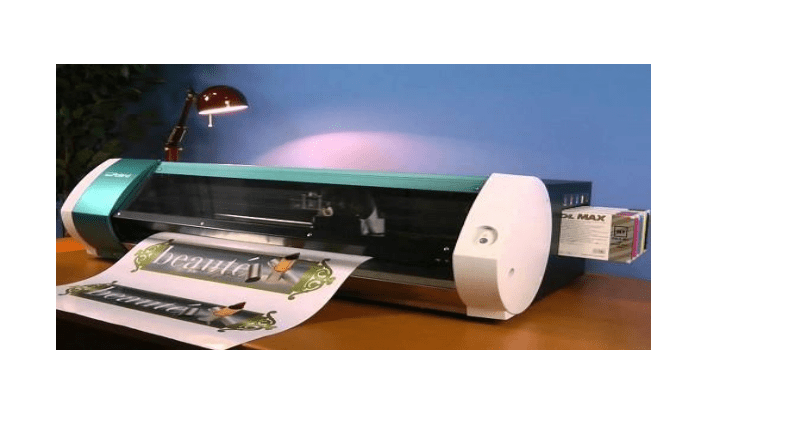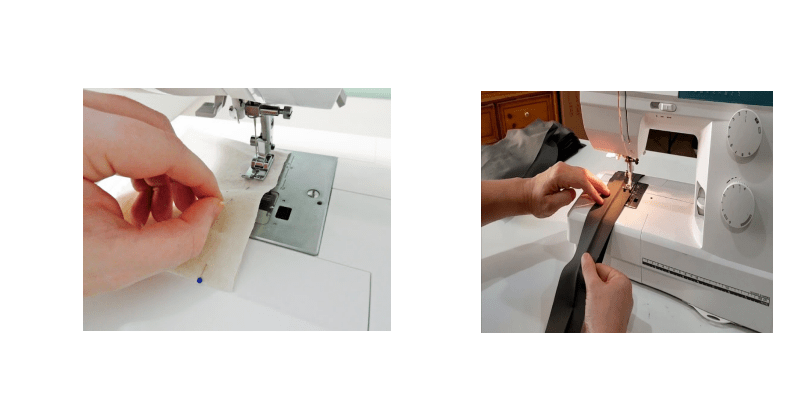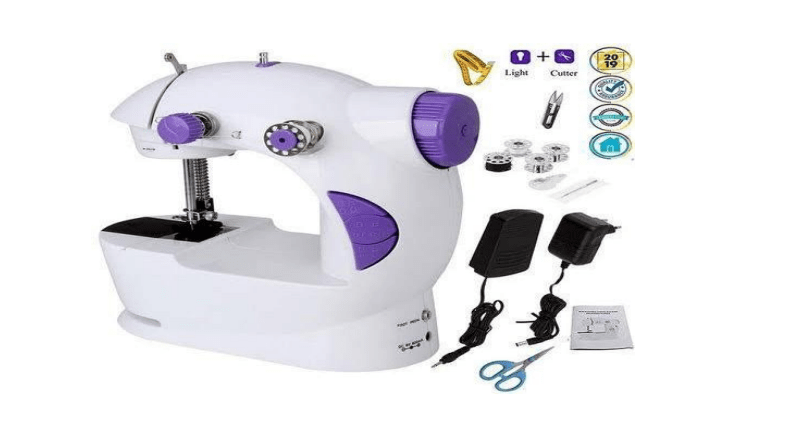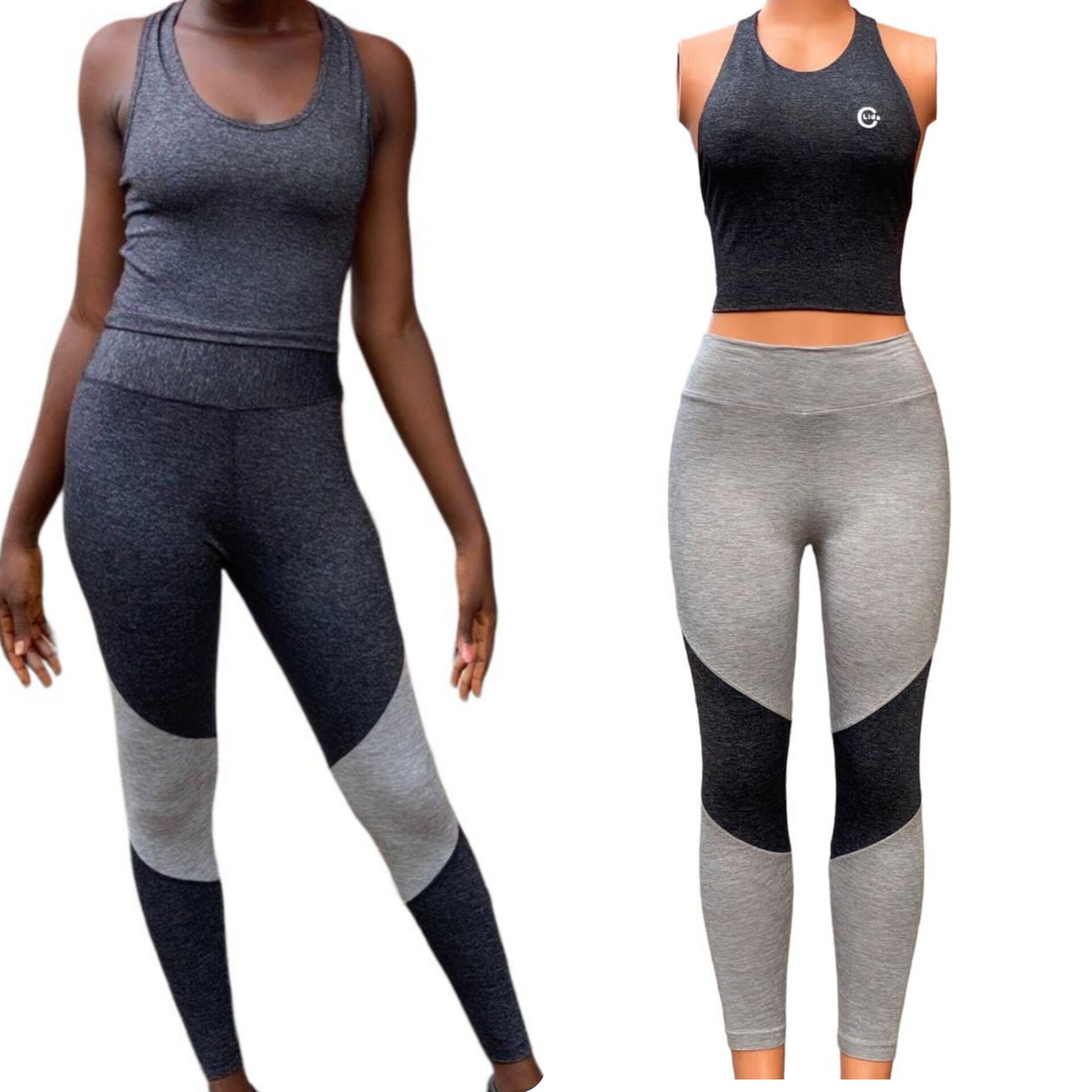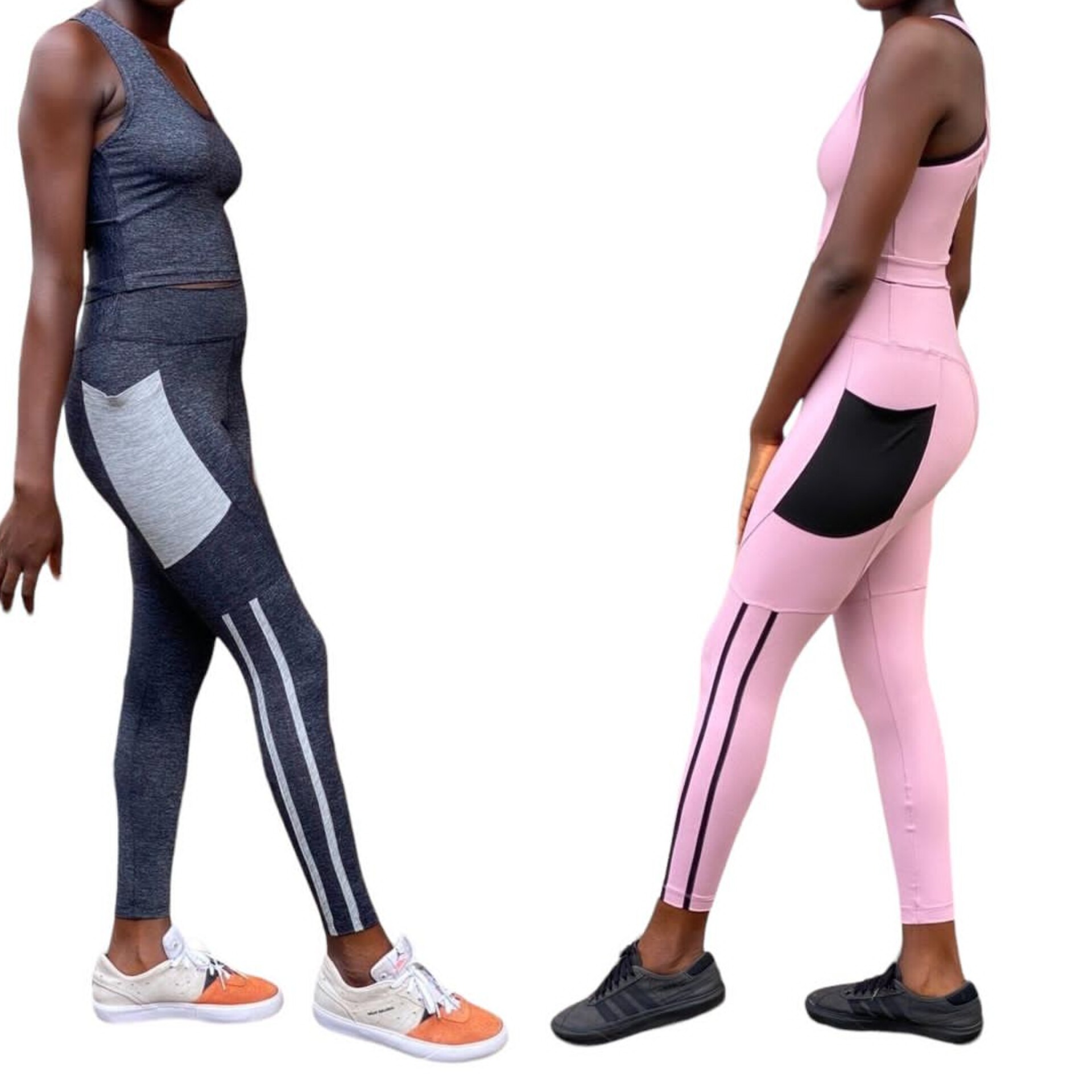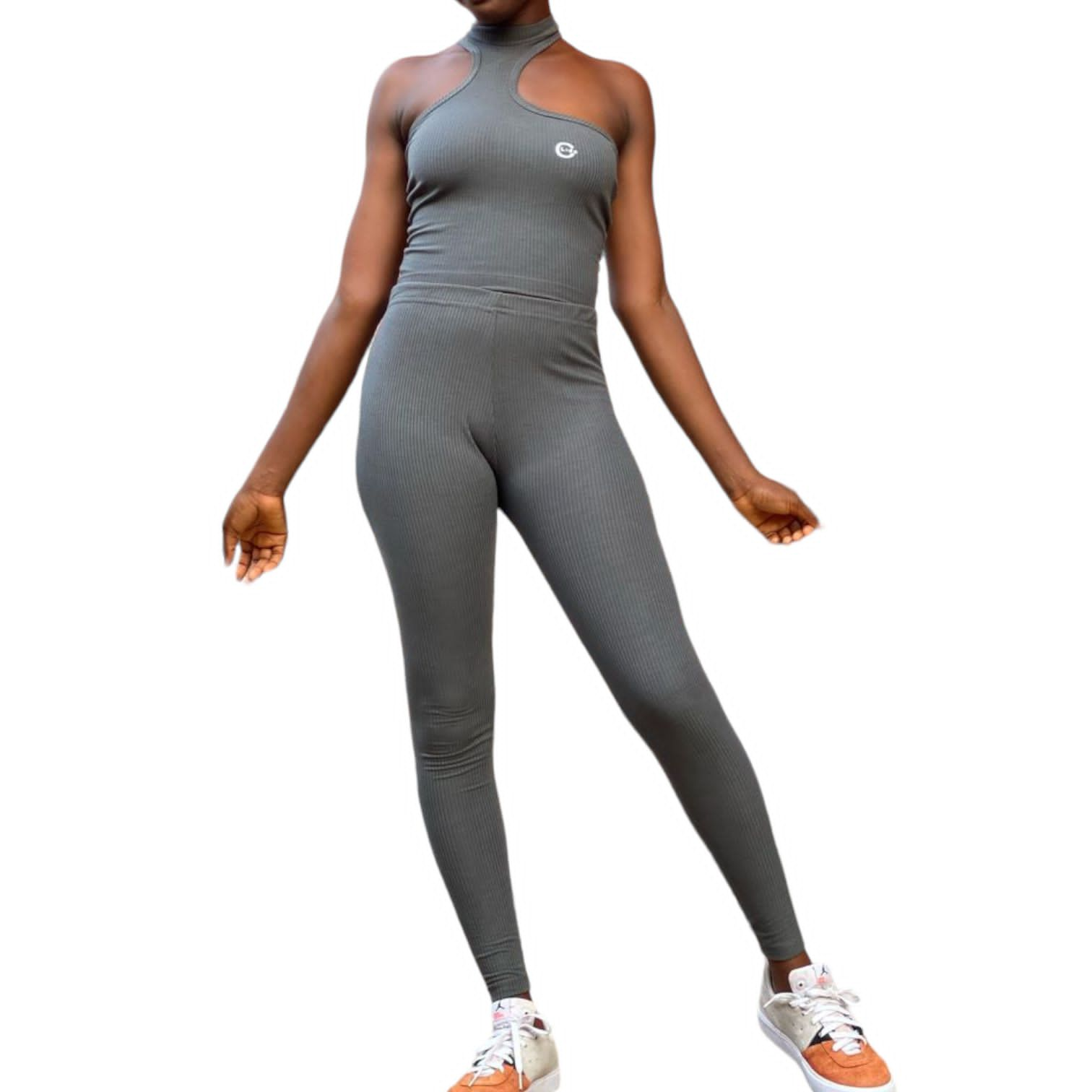Blog
INTERLOCK SEWING MACHINE
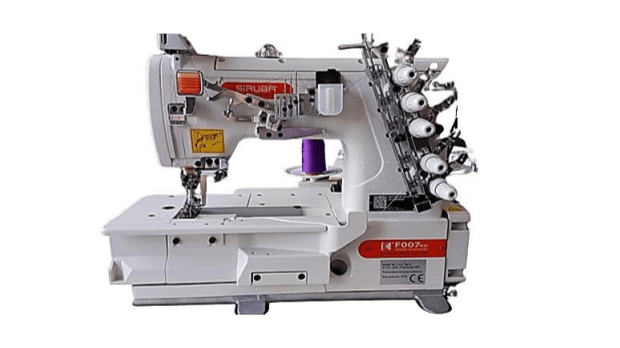
21 minute read
Connect your mind!
Introduction
A sewing machine is a machine used to sew
fabric and materials together with thread.
Sewing machines were invented during the first
Industrial Revolution to decrease the amount of
manual sewing work performed in clothing
companies.
Since the invention of the first sewing machine,
generally considered to have been the work of
Englishman Thomas Saint in 1790,
the sewing machine has greatly improved the
efficiency and productivity of the clothing
industry.
1 https://en.wikipedia.org/wiki/Sewing_machine#cite_note-1
Home sewing machines are designed for one
person to sew individual items while using a
single stitch type at a time.
In a modern sewing machine, the process of
stitching has been automated, so that the fabric
easily glides in and out of the machine.
Early sewing machines were powered by either
constantly turning a flywheel handle or with a
foot-operated treadle mechanism.
Electrically-powered machines were later
introduced. Industrial sewing machines, by
contrast to domestic machines, are larger,
faster, and more varied in their size, cost,
appearance, and tasks.
The interlock sewing machine, generally known
as an eggbeater, is also known as a special
sewing machine, which produces a chain
sewer.
This sew is substantially used for knitted
products similar to rolled collars, pipelines,
and home cloth products similar to folded
edges, tense seams, spliced seams, and trims.
In recent times, there are so numerous different
styles of garments that a small sewing process
can be played out in a thousand different ways.
The Interlock sewing machine simplifies the
sewing process, making it more efficient and
versatile.
It allows for customization according to the
specific needs of a project, enabling
manufacturers to offer personalized, high-end
services.
The stitch made by an interlock sewing
machine is called an Interlock stitch, An
interlocking stitch is a type of stitch most
commonly used in garments made of knit fabric.
This stitch helps keep the fabric from stretching
out of shape and creates a tight seam.
The interlock stitch looks very similar to a
zigzag stitch, but the inside of the zigzag is
much narrower.2

TYPES OF AN INTERLOCKING SEWING
MACHINE
- VG-8 Series Super High-Speed MultiModule Cylinder Bed Interlock Stitch
Machine with Active Thread Control:
(a) Ideal for various difficult sewing conditions.
(b) Ensures high quality and investment efficiency.
(c) Features Yamato’s signature Active Thread
Control and an epoch-making multi-module
design. - VGS-8 Series Cylinder Bed Interlock
Stitch Machine with Top Feeder:
(a)Unique rear pivot top feeder.
(b) Active Thread Control and Yamato Non-Stain
Technology.
(c) Suitable for various sewing factory applications. - VE-8F Series High-Speed Small Cylinder
Bed Interlock Stitch Machine:
(a) Active Thread Control System.
(b)Differential feed dogs installed in a 180 mm
cylinder.
(c) Applicable for small tubular articles like cuffs,
necklines, and ankles. - VES-8F Series Small Cylinder Bed
Interlock Stitch Machine with Variable Top
Feeder:
(a) Combines a 180 mm cylinder with differential
feed mechanism.
(b) Ideal for small tubular articles.
(c) Provides easy material handling and neat
finishes. - VF2500-8 Series Super High-Speed Flat
Bed Interlock Stitch Machine:
(a)Supports microfibers.
(b)Active Thread Control for a wide range of
seams.
(c) Minimizes the risk of oil stains. - VFS2500-8 Series Flat Bed Interlock
Stitch Machine with Top Feeder:
(a) Avoids sewing slippage, ply shifts, or puckering.
(b) Combines Active Thread Control and a top
feeder.
(c) Minimizes the risk of oil stains. - VC2700G-8F Class High-Speed Cylinder
Bed Interlock Stitch Machine:
(a) Non-Stain Technology.
(b) Suitable for a wide range of sewing conditions.
Mkl..ll.l - VC2790G-8F Class 2,3 Needle Streamline
Cylinder Bed Interlock Stitch Machine:
A WELL DETAILED DIAGRAM OF AN INTERLOCKING
SEWING MACHINE

SPECIFIC USES OF AN INTERLOCKING
SEWING MACHINE
An interlocking machine said earlier is a special
sewing machine has its own special uses, they
are:
11
- Rolled Edge Sewing: The interlocking
sewing machine can be used to neatly finish
the raw edges of fabric pieces, for example
using a 602 (two-needle, four-threaD) or
605 (three-needle, five-threaD) stitch can
reduce the bulkiness of seam allowances,
making the garment more comfortable to
wear.
By adjusting the machine, you can switch
between different stitch types like 406 (twoneedle, three-threaD) or 407 (threeneedle, four-thread), depending on the
desired finish and fabric thickness.
To do a rolled edge sewing, use the pack of
strips to wrap the raw edges of the cut
pieces for sewing, if you use a light pipeline,
the number of layers of sewing material on
the confluence allowance is too numerous,
and too thick, similar body-cut clothes may
not be comfortable to wear, but if you apply
the interlock sewing machine sewing 602
(two- needle, four- thread confluence
allowances) or 605( three- needle, fivethread confluence allowances) aches, the
pack of strips of raw edges of the package,
the number of layers of sewing material on
the confluence allowance can be reduced
from five layers to three and also can be
used for 406 ( two- needle, three- thread
confluence allowance) or 406( two- needle,
three- thread confluence allowance) aches.
The number of layers of material on the
confluence allowance can be reduced from
five to three, and 406(two-needle, threethread interlock sewing) or 407(threeneedle, four-thread interlock sewing) sew
can also be used (by removing the
ornamental vestments covering the interlock
machine, the 602 sew can be changed to
the 406 sew).
It is equipped with a sewing aid for a
pipeline, which not only reduces the
consistency of the confluence allowance but
also improves the effectiveness of the
operation. - Alternate Over locking and Sewing:
This technique involves using the interlock
machine to create a flat, smooth seam
allowance after over locking.
After the knitted garment is darned with over
lock sew, the confluence portion of the
confluence allowance won’t fit well because
of the pooching confluence portion, also the
confluence portion can be covered with the confluence allowance to make the
confluence portion fit well.
The pooching part of the confluence can be
made to fit, but the operation of this process
is frequently equipped with a special needle
plate and presser bottom to fix the
confluence allowance to make the operation
more controllable.
Because of the range between the two or
three aches of the tense sew, another netlike sew can cover the lace tape recording
and suture directly to the confluence
allowance on the cut piece.
And don’t need to fold the edge of the cut
piece to help loose edges, which can
reduce the consistency of the confluence
allowance, more comfortable to wear, similar to women’s knitted undergarments
with this system of sewing.
Special needle plates and presser feet may
be used to control the fabric and ensure a
neat finish.
- Sewing Process of Sole Lace: The
interlock machine allows for decorative
stitching over lace tape, attaching it directly
to the seam allowance without the need for
edge folding.
This reduces bulk and enhances comfort,
especially in garments like women’s knitted
undergarments. - Folded-Edge Stitching Process: For
edges that require a thin, flat finish, such as
skirt hems or trouser legs, the interlock
machine can combine over locking and
single-fold sewing into one step.
This not only streamlines the process but
also prevents common issues like twisted
edges. - Stitching on Elastic Fabrics: Sequel
to the strength of the interlock stitch, it’s
ideal for working with knitted and/or elastic
fabrics, the machine can also add
decorative, net-like stitches to enhance the
visual appeal of garments like knitted T-shirts and sweaters.

MAINTENANCE OF AN INTERLOCKING
SEWING MACHINE
- Use Good Quality Needle and Thread:
Using high-quality thread and needles is
crucial for the smooth operation of your
sewing machine.
Low-quality thread can be linty and harmful
to machines.
It’s recommended to change your needle
every 10 hours of active stitching or about
four bobbins worth of sewing.
This helps prevent stitch problems and
extends the life of your machine. - Don’t Use Canned Air for Cleaning:
While canned air might seem like a quick
solution for cleaning, it can actually cause
harm.
Canned air introduces moisture into your
sewing machine, which can lead to rusting
and corrosion of the machine’s delicate
components over time. Instead of canned air, it’s recommended to use a nylon brush for cleaning.
- Oil Your Machine Regularly: Oiling
your machine is essential for ensuring its
smooth operation and longevity.
Good quality sewing machine oil is
recommended.
The frequency of oiling can depend on how
often you use your machine.
If you use your machine daily, you should oil
it every day, if you use it less frequently, oil
it once a week.
- Cover Your Sewing Machine: To keep
your machine as clean as possible, store it
under a dust cover or in a hard case when
not in use.
This prevents dust, lint, and other particles
from accumulating in your machine, which
can affect its performance10. - Regular Cleaning: Regular cleaning is
crucial to prevent dust and lint buildup that
can clog the machine and affect its
performance.
A good rule of thumb is to clean and oil your
sewing machine once for every 5-10 days of
use.
- Tighten The Screws Regularly: Over
time, the screws of your sewing machine
may loosen.
Not only do loose screws make the sewing
process time-consuming, but they can also
lead to errors.
Hence, every now and then, keep tightening
the screws to make sure that the machine is
held properly. - Clean The Machine But Not All At
Once: It’s important to clean your machine
regularly, but not all at once.
This means you should clean one part at a
time to avoid confusion and ensure each
part is thoroughly cleaned.
SAFETY PRECAUTIONS TO BE TAKEN
WHEN USING AN INTERLOCKING SEWING
MACHINE
a. Turn Off and Unplug: It’s crucial to
turn off and unplug the sewing machine
after use.
This prevents accidental starts, which
could lead to injuries, and also ensures
that children or others won’t tamper with
the machine when it’s not being
monitored.
b. Keep Safe Distance: Keeping your
fingers at least an inch away from the
needle is a good practice.
This helps avoid accidental pricks or
getting your fingers caught under the
needle while feeding fabric through the
machine.
c. Use a Needle Guard: A needle guard is
a protective device that covers the
needle area.
It’s designed to prevent your fingers
from getting too close to the moving
needle, thus reducing the risk of injury.
d. Secure Needles and Pins:
Organize and store needles, pins, and
pincushions in a sewing kit.
This not only keeps your workspace tidy
but also prevents these sharp objects
from causing accidental injuries.
e. De-clutter the Workspace: A
clutter-free workspace allows for better
concentration and reduces the risk of
mistakes that could lead to accidents.
Ensure that only the necessary tools are
on the table.
f. Inspect Needles: Always check that the
needles are straight and not damaged
before use.
Bent or broken needles can break
during sewing, potentially causing injury
or damaging the fabric.
g. Handle Sharp Objects Carefully:
Scissors, seam rippers, and other sharp
tools should be handled with care and
stored safely when not in use to prevent
cuts.
h. Avoid Sewing Over Pins:
Removing pins as you sew is important
because sewing over them can cause
the needle to break and possibly fly
towards you, which is dangerous.
i. Be Mindful of Hair: If you have long
hair, make sure to tie it back to prevent it
from getting caught in the machine’s
moving parts.
i. Proper Threading: Incorrect threading can
cause thread jams and needle breakage.
Make sure to thread the machine correctly
according to the manufacturer’s instructions.
j. Electrical Safety: Be cautious with the
sewing machine’s electrical components.
Avoid using the machine near water and
inspect cords for damage to prevent
electrical shocks.
k. Control the Fabric: Maintain control over
the fabric while sewing.
This helps prevent the fabric from pulling,
which can cause uneven stitches or needle
breakage.
MULTIPLE CHOICE QUESTIONS
PART A
- Who is generally considered to have
invented the first sewing machine?
A). Isaac Singer
B). Elias Howe
C). Thomas Saint
D). James Edward Allen Gibbs - What powers early sewing machines?
A). Solar energy
B). Battery
C). Constantly turning a flywheel handle or
with a foot-operated treadle mechanism
D). Wind energy - How do modern sewing machines differ
from early ones?
A). They are smaller
B). They are manually operated
C). The process of stitching has been
automated
D). They use different types of thread - What is another name for the interlock
sewing machine?
A). Eggbeater
B). Blender
C). Mixer
D). Whisk - What type of stitch does an interlock
sewing machine produce?
A). Straight stitch
B). Zigzag stitch
C). Interlock stitch
D). Over lock stitch - What is the interlock stitch most
commonly used in?
A). Garments made of woven fabric
B). Garments made of knit fabric
C). Leather products
D). Paper products - What does the interlock stitch help
prevent?
A). The fabric from fading
B). The fabric from tearing
C). The fabric from stretching out of shape
D). The fabric from shrinking - How does the interlock stitch look?
A. Similar to a straight stitch
B. Similar to a zigzag stitch, but the inside of
the zigzag is much narrower
C. Similar to an over lockstitch
D. Similar to a chain stitch. - What stitch can be used by the interlocking
sewing machine to reduce the bulkiness of
seam allowances?
A) 602 (two-needle, four-thread)
B) 605 (three-needle, five-thread)
C) Both a and b
D) None of the above - What does the interlock machine use to
improve the effectiveness of the operation in
rolled edge sewing?
A) Sewing aid for a pipeline
B) Special needle plate
C) Presser bottom
D) All of the above. - What is the purpose of the alternate over
locking and sewing technique?
A) To create a flat, smooth seam allowances
B) To cover the lace tape recording
C) To attach lace tape directly to the seam
allowance
D) None of the above. - What is used in the alternate over locking
and sewing technique to control the fabric and
ensure a neat finish?
A) Special needle plates and presser feet
B) Sewing aid for a pipeline
C) Both a and b.
D) None of the above. - What does the sewing process of sole lace
involve?
A) Decorative stitching over lace tape
B) Attaching lace tape directly to the seam
allowance without the need for edge folding
C) Both a and b
D) None of the above. - What does the folded-edge stitching
process prevent?
A) Twisted edges
B) Pooching confluence portion
C) Both a and b
D) None of the above. - What type of fabrics is the interlock stitch
ideal for working with?
A) Knitted fabrics
B) Elastic fabrics
C) Both a and b
D) None of the above. - What is recommended to use for cleaning
an interlocking sewing machine instead of
canned air?
A) A nylon brush
B) A cotton cloth
C) A feather duster
D) None of the above. - How often should you oil your sewing
machine if you use it daily?
A) Once a week
B) Every day
C) Once a month
D) None of the above. - What is recommended to store your sewing
machine under when not in use?
A) A dust cover or in a hard case
B) A plastic bag
C) A cardboard box
D) None of the above - How often should you clean and oil your
sewing machine?
A) Once for every 5-10 days of use
B) Once a week
C) Once a month
D) None of the above. - What should you do regularly to make sure
that the machine is held properly?
A) Tighten the screws
B) Oil the machine
C) Clean the machine
D) None of the above. - How should you clean your machine?
A) All at once
B) One part at a time
C) Both a and b
D) None of the above. - What is the purpose of using a 602 stitch in
rolled edge sewing?
A) To reduce the number of layers of sewing
material on the confluence allowance
B) To wrap the raw edges of the cut pieces
for sewing
C) Both a and b
D) None of the above. - What is the purpose of using a 605 stitch in
rolled edge sewing?
A) To reduce the number of layers of sewing
material on the confluence allowance
B) To wrap the raw edges of the cut pieces
for sewing
C) Both a and b
D) None of the above. - What is the purpose of using a 406 stitch in
rolled edge sewing?
A) To reduce the number of layers of sewing
material on the confluence allowance
B) To wrap the raw edges of the cut pieces
for sewing
C) Both a and b
D) None of the above. - What is the purpose of using a 407 stitch in
rolled edge sewing?
A) To reduce the number of layers of sewing
material on the confluence allowance
B) To wrap the raw edges of the cut pieces
for sewing
C) Both a and b
D) None of the above. - What is the purpose of the special needle
plate and presser bottom in the alternate over
locking and sewing technique?
A) To fix the confluence allowance
B) To make the operation more controllable
C) Both a and b
D) None of the above. - What is the purpose of the net-like sew in
the alternate over locking and sewing
technique?
A) To cover the lace tape recording
B) To suture directly to the confluence
allowance on the cut piece
C) Both a and b
D) None of the above. - What is the purpose of the folded-edge
stitching process?
A) To combine over locking and single-fold
sewing into one step
B) To streamline the process
C) Both a & b
D) None of the above.
PART B: Fill in the gap with the appropriate
answer
- The VG-8 Series is a __________
Interlock Stitch Machine with Active Thread
Control. - The VG-8 Series is ideal for ___________.
- The VGS-8 Series is a __________
Interlock Stitch Machine with Top Feeder. - The VGS-8 Series features___________
and Yamato Non-Stain Technology. - The VE-8F Series is a ___________
Interlock Stitch Machine. - Using high-quality thread and needles is
crucial for the smooth operation of your
sewing machine. Low-quality thread can be
__________ and harmful to machines. - Canned air introduces ___________ into your
sewing machine, which can lead to rusting
and corrosion of the machine’s delicate
components over time. - If you use your machine daily, you should oil
it __________. - To keep your machine as clean as possible,
store it under a ___________ or in a hard case
when not in use. - Over time, the screws of your sewing
machine may _________. Not only do loose
screws make the sewing process time consuming, but they can also lead to errors. - It’s important to clean your machine
regularly, but not all at once. This means you
should clean _________part at a time to avoid
confusion and ensure each part is thoroughly
cleaned. - It’s crucial to turn off and unplug the sewing
machine after use. This prevents accidental
starts, which could lead to _________, and also
ensures that children or others won’t tamper
with the machine when it’s not being
monitored. - Keeping your fingers at least an inch away
from the needle is a good practice. This helps
avoid accidental pricks or getting your fingers
caught under the needle while _________.
fabric through the machine - A needle guard is a protective device that
covers the needle area. It’s designed to
prevent your fingers from getting too close to
the moving needle, thus reducing the risk of
___________. - Organize and store needles, pins, and
pincushions in a sewing kit. This not only
keeps your workspace tidy but also prevents
these sharp objects from causing accidental
__________. - Always check that the needles are straight
and not damaged before use. Bent or broken
needles can break during sewing, potentially
causing injury or damaging the _____________. - Be cautious with the sewing machine’s
electrical components. Avoid using the
machine near water and inspect cords for
damage to prevent electrical ____________.
INSTRUCTORS COPY
ANSWERS TO MULTIPLE CHOICE
QUESTIONS 1-28.

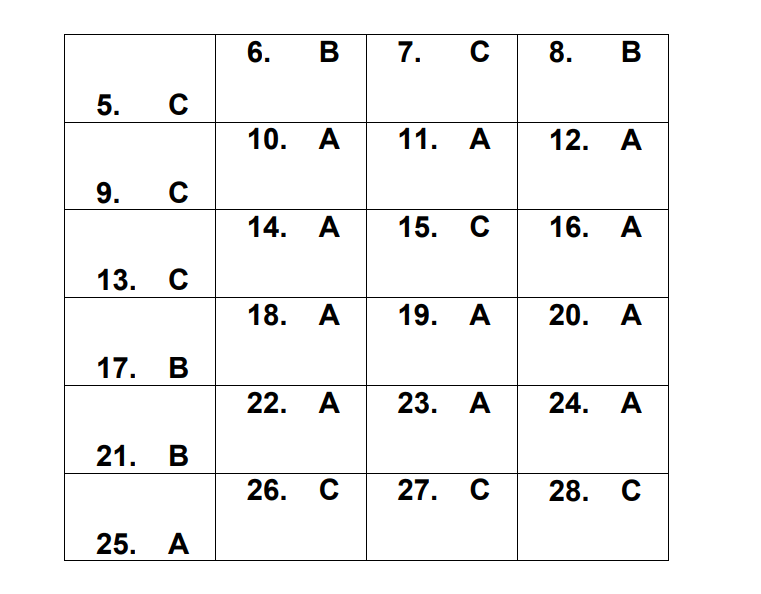
ANSWERS TO FILL IN THE BLANK SPACES
- SUPER HIGH-SPEED MULTI-MODULE
CYLINDER BED - VARIOUS DIFFICULT SEWING
CONDITIONS - CYLINDER BED
- ACTIVE THREAD CONTROL
- HIGH-SPEED SMALL CYLINDER BED.
- LINTY
- MOISTURE
- EVERY DAY
- DUST COVER
- LOOSEN
- ONE
- INJURIES
- FEEDING
- INJURY
- INJURIES
- FABRIC
- SHOCKS
PART C: FIND THE MISSING PARTS IN THIS
DIAGRAM

- ————————————————-
- ————————————————-
- ————————————————-
- ————————————————-
- ————————————————-


